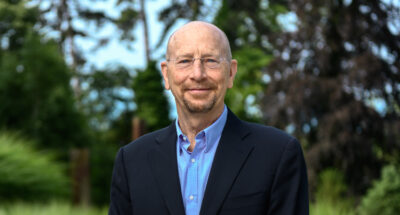
Halfway 2025: How to read two quarters under Trump 2.0
The mid-year economic outlook: How to read the first two quarters of Trump...

by Peter Vogel Published March 10, 2021 in Leadership • 4 min read
Venture ideas take inspiration. Venture opportunities need perspiration
Ideas are not the same as opportunities. Starting a new venture requires time and effort. But this seemingly obvious statement has led to confusion among entrepreneurs and academics.
Many budding entrepreneurs believe that an idea alone will guarantee them success and wealth. What they ignore, however, is that it takes time, effort and resources to turn a venture idea into a venture opportunity – and that not every idea will automatically turn into an opportunity.
The same holds true for the academic community. Over the past two decades there has been plenty of research about entrepreneurial opportunities, but relatively little progress was made in our understanding of what an opportunity actually is. What’s more, debates about opportunity have happened largely within the academic community without trying to make them relevant to entrepreneurs, practitioners and teachers. One illustration of this is the long-running theoretical debate about whether opportunities are discovered or created.
I’m an entrepreneur myself and have always felt that these arguments were not relevant to me and my business. Instead of discussing philosophical questions, we should be trying to create meaningful frameworks: tools that help entrepreneurs and academics to understand the potential of an idea to become an actual opportunity. By borrowing concepts from the creativity and innovation literature, and by differentiating between ideas and opportunities, I created a framework that includes these different literature streams and provides a meaningful basis for academics, entrepreneurs and lecturers alike in that it helps assess when an idea becomes an actual opportunity. Here I’ll explain the broad principles of this framework.

We have all heard a lot about business models and most entrepreneurs have, at least once, used the business model canvas in order to specify the different dimensions of their business. But evidently, no entrepreneur starts with a complete business model in mind when he or she has a first idea in mind. Instead, this idea forms the seed, including some partially-complete and fragmented pieces of information about what such a business model might look like in the future. It takes a lot of churning and turning, shaping and refining, market research, pivoting and testing on the market in order to find out the right “ingredients” and actually turn this idea into a viable business opportunity.
In the analogy of the seed, it requires the desire, care and nurturing by the gardener in order to turn the seed into a small plant and hopefully a large tree at some point. But besides this effort, it also takes skills and capabilities from his side (individual-level factors) as well as sunlight, water and the right soil (external factors) in order to help the plant grow.
Similarly, a venture idea can only turn into a venture opportunity, if there is a favorable combination of circumstances that make it both desirable and feasible for the entrepreneur to exploit a venture concept and to introduce a potentially value-adding offering into the marketplace. While the exploitation of one business may be an opportunity for one entrepreneur, another might not find it all that interesting, hence he or she does not see it as an opportunity.
So when you have just come up with an idea and think about starting a business based on it, you should remember the following:

Professor of Family Business and Entrepreneurship at IMD
Peter Vogel is a Professor of Family Business and Entrepreneurship, Director of the Global Family Business Center (GFBC), and Debiopharm Chair for Family Philanthropy at IMD. He is Program Director of Leading the Family Business, Leading the Family Office, and the Lean Intrapreneurship program. He is globally recognized as one of the leading family business educators, advisors and academics, has received numerous awards and recognitions and is the author of the award-winning books “Family Philanthropy Navigator” and “Family Office Navigator”.

22 hours ago • by Richard Baldwin in Leadership
The mid-year economic outlook: How to read the first two quarters of Trump...

July 4, 2025 • by Arturo Pasquel in Leadership
Susanne Hundsbæk-Pedersen, Global Head of Pharma Technical Operations at Roche, shares how she has navigated the various pivots in her career, and the importance of curiosity, optimism and energy. ...

July 3, 2025 • by Eric Quintane in Leadership
Entrepreneurial talent who work with other teams often run into trouble with their managers. Here are ways to get the most out of your ‘boundary spanners’...
 Audio available
Audio available
June 27, 2025 • by David Bach in Leadership
Business leaders today should identify their points of leverage – be it public influence, economic power, or industry collaboration – to quietly but effectively push back against policies that undermine democracy, said...
Explore first person business intelligence from top minds curated for a global executive audience